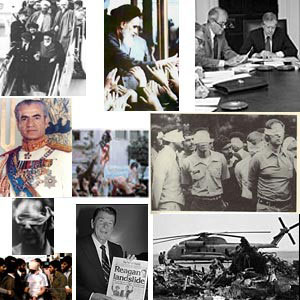
 |
Ayatollah's in Iran |
| HOME |
 |

On November 4, 1979 the U.S. embassy in Tehran, Iran was taken over by students who were followers of Imam Ruhollah Khomeini. They were angry at the United States for harboring Iranís former leader, the Shah, Mohammad Reza Pahlavi. For the next 444 days, 52 diplomats and American citizens were held hostage. The actions that lead up to this moment were more than 26 years in the making. The Shah gained power in 1953, in part, by support from the United States. The previous leader was favorable to Russia, and the United States needed new sources of oil. Iran was that new source. The Shah gained power by attempting to eliminate the competition. This meant torturing, killing and exiling members of the opposition. This included Imam Ruhollah Khomeini who was exiled to other countries in Europe and the Middle East before returning to Iran when the Shah fled to Egypt in January of 1979. Khomeini spread his anti-American beliefs to his followers by labeling the United States as the Great Satan and an Enemy of Islam. When Khomeini took power in February of 1979, he instituted religious rule throughout Iran. This included dress codes for women and limited freedoms of speech and press. Under Khomeiniís rule the same harsh punishments and abuses occurred that existed under the Shahís rule. Many say that these injustices were even worse under Khomeini. Many believe that Carterís failure to get the hostages released in a timely manner was the deciding factor in his defeat to Ronald Reagan in the 1980 presidential election. |
|
|